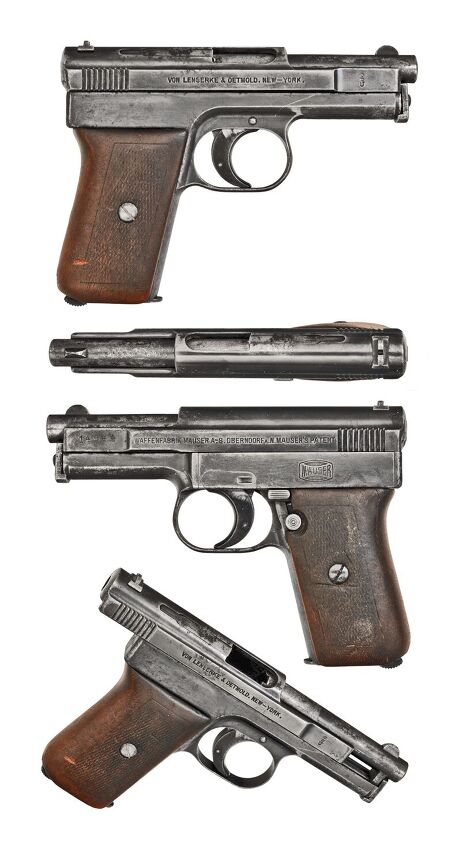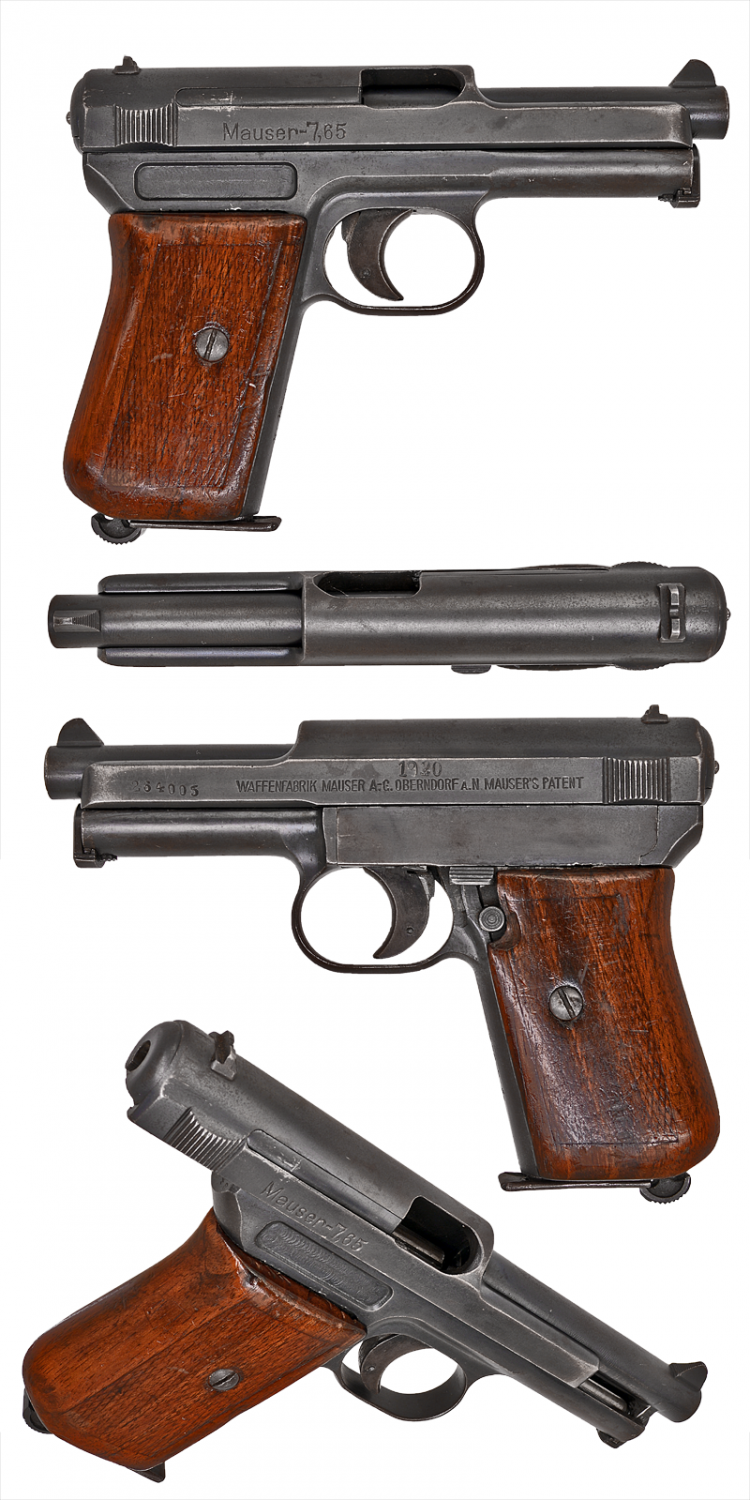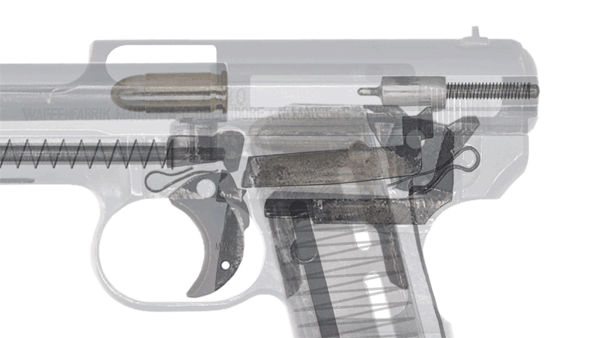The Mauser 1914 is not a well-known firearm today, but during the First World War, it became one of the most important small semiautomatic handguns of the early 20th Century.
The Mauser pocket pistol family’s story begins with Josef Nickl of Austria. He envisioned one of the first families of semiautomatic handguns ever, all sharing the same design, ergonomics, and tooling. Today, handgun families like the 1911 and Glock are dominant, with variants for every use from pocket pistol to full-size competition handgun, but at the time handguns were typically designed with a specific purpose in mind. Nickl aimed to change this, proposing a family of handguns ranging from .25 ACP to larger military calibers like 9mm and, later, .45 ACP. In 1904, he was hired by Mauser, and in 1905 he was put in charge of a handgun project to produce a 9mm blowback handgun. Due to the unlocked breech action, the resulting handguns were too large to make saleable products, due to the mass needed to keep the breech closed long enough for the pressure to drop in the barrel. Prototypes were made that explored different configurations, but by 1909 it became clear that blowback operation was ill-suited to the 9mm cartridge.
However, Mauser decided not to give up on the project as a whole. The research, patents and tooling that was pionneered by the 9mm prototypes was applied to a much smaller gun, the Model 1909 in .25 ACP, which would be brought to market while work on the 9mm project continued. .25 ACP is an impotent round, but at the time it was a very popular handgun caliber for small pocket pistols. In contrast to the 9mm, the .25 ACP round is very well-suited to simple blowback operation, and the Model 1909 was a mechanical success, although it retained some unneccessary complexity from its 9mm predecessors. Before the gun was brought to market, it was simplified and brought to market as the Model 1910 pocket pistol. These handguns sold very well, being one of the most ergonomic and easy to shoot of the .25 ACP pocket pistols of the time.
During this time, work continued on the 9mm and by this time .45 ACP variants, as the company implemented various mechanisms to retard the slide’s rearward movement to allow pressure in the barrel to drop. These pistols did see a modest amount of production in various forms, but they were never commercially successful.
While work on the service pistol variants continued, Fidel Feederle (responsible for the famous C96 pistol) worked with Nickl to create a new .32 ACP variant of the system, and worked in a number of improvements to the guns in addition to scaling them up for the new, larger cartridge. These improvements included bulged slide serrations, a pushbutton retainer for the barrel takedown latch, and a new simpler dovetailed sideplate, replacing the older type with a swing-down latch.
Because the Mauser pocket pistol series is just straight blowback, I am not going to go into detail on how it works, or how to field strip it (thorough descriptions of both can be found in the video embedded above). Rather, below is Othais’s gif of the gun’s operation:
The safety on all these pistols was ingenious, incorporating two separate and distinct motions for “on” and “off”. To put the gun on safe, the user swept his thumb down against a lever, but to ready the gun for firing, the user pushed a button, which automatically returned the lever to the up position. Another odd feature of the guns was their slide catch, and automatic slide release. On the last round, the slide is held back by the magazine follower. When the magazine is releases and pulled free, it trips a rocker that continues to hold the slide back with no magazine in the gun. When a new magazine is inserted, the rocker is tripped again, which releases the slide automatically. Even more bizarrely, there is no external slide catch, and pulling the slide rearward does not release the slide! The only way to release the slide is to insert an empty or loaded magazine!
Despite not resulting in a successful service pistol in a major caliber, the Model 1910 and 1914 pocket pistols were a huge commercial success for the Mauser company. Of both types combined, about a million handguns were made – a very large number for a handgun of the period. The Model 1914 in particular was very successful as a police pistol, and when the First World War began, the German Army purchased the little .32s in large numbers. It was actually their suitability as police weapons that led to the retention by the government of many of the military contract pistols after the Armistice.
In the early 1930s, a man named August Weiss came to Mauser to oversee Luger and other handgun production at Obendorf. Weiss recognized the value of reworking the 1910 and 1914 aesthetically, and to accommodate newer, cheaper metalworking processes like stamping. The resulting pistols were designated 1910/34 and 1914/34, and featured recontoured grips and a larger rounded front sight.
Although production was greatly reduced in 1941 because of the Second World War, the Mauser pocket pistol family continued production until early 1945, after which Germany’s defeat ended both production and development of the pistol family.
 Your Privacy Choices
Your Privacy Choices



